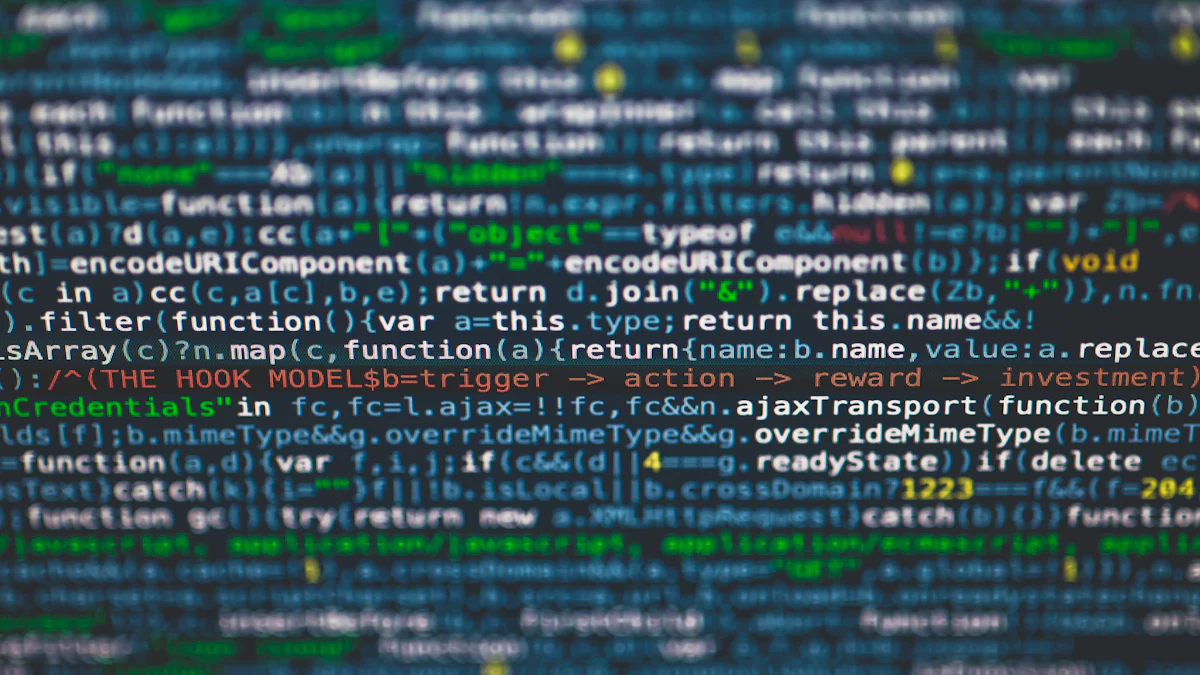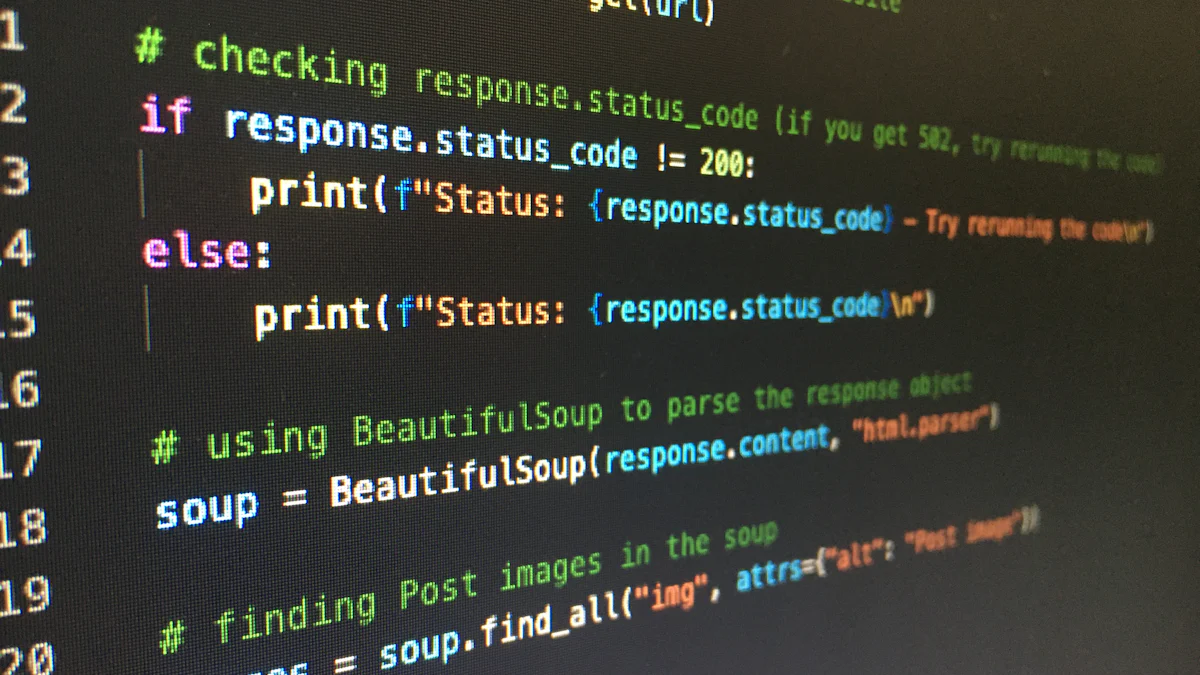AI Programming: Core Concepts and Languages for AI Software Development

AI Programming has become a cornerstone of modern technology. Understanding core concepts and languages in AI software development is crucial for creating effective and innovative solutions. The AI market is projected to reach $407 billion by 2027, with a 37.3% annual growth rate between 2023 and 2030. AI's relevance spans various industries, driving significant revenue increases and adoption rates. Organizations adopting AI report a 6% to 10% revenue increase. Mastering AI programming empowers developers to shape the future of technology, solve complex problems, and foster innovation.
Core Concepts in AI Programming

Machine Learning
Supervised Learning
Supervised learning involves training a model on labeled data. The algorithm learns to map input data to the correct output based on examples. This method proves effective for tasks like classification and regression. For instance, email spam detection uses supervised learning to classify emails as spam or not spam.
Unsupervised Learning
Unsupervised learning deals with unlabeled data. The algorithm identifies patterns and structures within the data without predefined labels. Clustering and association are common techniques. Customer segmentation in marketing often employs unsupervised learning to group customers based on purchasing behavior.
Reinforcement Learning
Reinforcement learning focuses on training models through trial and error. The model learns to make decisions by receiving rewards or penalties. This approach suits environments where actions impact future states. Applications include game playing and robotic control, where the model learns optimal strategies over time.
Neural Networks
Structure of Neural Networks
Neural networks consist of interconnected nodes or neurons. These nodes are organized into layers: input, hidden, and output layers. Each connection has a weight that adjusts during training. Neural networks mimic the human brain's structure, enabling complex pattern recognition and decision-making.
Types of Neural Networks
Various types of neural networks exist, each suited for specific tasks. Convolutional Neural Networks (CNNs) excel in image processing. Recurrent Neural Networks (RNNs) handle sequential data like time series and text. Generative Adversarial Networks (GANs) generate new data samples resembling the training data.
Training Neural Networks
Training neural networks involves adjusting weights to minimize errors. Backpropagation is a common method used for this purpose. The process iterates through forward and backward passes to update weights. Proper training requires large datasets and computational resources. Techniques like dropout and batch normalization improve training efficiency and model performance.
Natural Language Processing (NLP)
Basics of NLP
Natural Language Processing (NLP) enables machines to understand and generate human language. NLP combines linguistics, computer science, and AI. Tasks include language translation, sentiment analysis, and text summarization. NLP models analyze text data to extract meaningful information and perform language-related tasks.
Applications of NLP
NLP finds applications in various fields. Chatbots and virtual assistants use NLP to interact with users. Sentiment analysis helps businesses gauge customer opinions from social media. Machine translation services like Google Translate rely on NLP to convert text between languages. NLP enhances search engines by improving query understanding and relevance.
Techniques in NLP
Several techniques drive NLP advancements. Tokenization breaks text into individual words or phrases. Named Entity Recognition (NER) identifies entities like names and dates within text. Part-of-Speech (POS) tagging assigns grammatical categories to words. Advanced models like Transformers and BERT have revolutionized NLP by achieving state-of-the-art performance in many tasks.
Computer Vision
Image Recognition
Image recognition involves identifying objects or patterns within images. This process uses algorithms to analyze visual data and classify it into predefined categories. Convolutional Neural Networks (CNNs) play a crucial role in image recognition due to their ability to detect features like edges and textures. For example, facial recognition systems use image recognition to identify individuals based on their facial features.
Object Detection
Object detection extends beyond image recognition by not only identifying objects but also locating them within an image. This technique involves drawing bounding boxes around detected objects and labeling them. Algorithms like YOLO (You Only Look Once) and SSD (Single Shot MultiBox Detector) excel in real-time object detection. Applications include autonomous vehicles detecting pedestrians and obstacles, as well as security systems monitoring for suspicious activities.
Applications of Computer Vision
Computer vision has diverse applications across various industries. In healthcare, computer vision assists in medical imaging analysis, such as detecting tumors in MRI scans. Retailers use computer vision for inventory management by tracking product availability on shelves. Agriculture benefits from computer vision through crop monitoring and disease detection. Additionally, augmented reality (AR) and virtual reality (VR) technologies rely on computer vision to create immersive experiences by overlaying digital information onto the real world.
Popular Languages for AI Software Development

Python
Libraries and Frameworks
Python stands out as a leading language in AI development. The language boasts a rich ecosystem of libraries and frameworks. TensorFlow and PyTorch offer robust tools for building neural networks. Scikit-learn provides efficient solutions for machine learning tasks. Keras simplifies the process of creating deep learning models. These resources streamline the development process, making Python a preferred choice for AI projects.
Use Cases in AI
Python excels in various AI applications. Data scientists use Python for data analysis and visualization. Natural Language Processing (NLP) tasks benefit from Python's versatility. Chatbots and virtual assistants often rely on Python-based frameworks. Python also plays a crucial role in computer vision projects. Autonomous vehicles and facial recognition systems frequently utilize Python libraries. Python's simplicity and power make it indispensable in AI software development.
R
Statistical Analysis
R is renowned for its statistical analysis capabilities. Researchers and data analysts favor R for its extensive statistical packages. R enables precise data manipulation and visualization. The language offers tools for hypothesis testing and regression analysis. R's comprehensive libraries support advanced statistical modeling. These features make R an excellent choice for data-driven AI projects.
Machine Learning with R
R also excels in machine learning applications. The language provides numerous packages for building predictive models. Caret and randomForest are popular choices for classification and regression tasks. R's integration with other tools enhances its machine learning capabilities. Data preprocessing and feature engineering become seamless with R. The language's flexibility allows for custom model development. R's strengths in statistical analysis and machine learning make it a valuable asset in AI development.
Java
Scalability and Performance
Java offers significant advantages in scalability and performance. Enterprises often choose Java for large-scale AI applications. The language's robustness ensures reliable software development. Java's concurrency features enhance performance in multi-threaded environments. The language's platform independence adds to its appeal. Java's strong memory management capabilities contribute to efficient execution. These attributes make Java suitable for high-performance AI systems.
AI Libraries in Java
Java supports a variety of AI libraries. Deeplearning4j provides tools for building neural networks. Weka offers a collection of machine learning algorithms. MOA specializes in data stream mining. Java-ML serves as a library for machine learning tasks. These resources expand Java's utility in AI development. Java's comprehensive libraries enable the creation of sophisticated AI solutions.
Other Languages
C++
C++ offers significant advantages in AI programming due to its performance and efficiency. Developers use C++ for resource-intensive applications. The language's low-level memory manipulation capabilities provide fine-grained control over computational processes. C++ excels in real-time systems and applications requiring high-speed computations. Libraries like TensorFlow and Caffe offer C++ APIs, enabling robust AI model development. C++ remains a preferred choice for performance-critical AI tasks.
Julia
Julia stands out for its high-performance capabilities and ease of use. The language combines the speed of C++ with the simplicity of Python. Julia's just-in-time (JIT) compilation ensures efficient execution of complex algorithms. Researchers and data scientists favor Julia for numerical and scientific computing. The language's syntax facilitates rapid prototyping and experimentation. Libraries such as Flux.jl and MLJ provide powerful tools for machine learning and deep learning. Julia's strengths make it an excellent choice for AI research and development.
Lisp
Lisp has a long history in AI programming. The language's symbolic processing capabilities make it suitable for AI applications. Lisp excels in tasks involving natural language processing and symbolic reasoning. The language's flexibility allows for dynamic code generation and modification. Libraries like Common Lisp Artificial Intelligence (CLAI) offer tools for building AI systems. Lisp's unique features continue to attract AI researchers and developers.
Best Practices in AI Programming
Data Preprocessing
Cleaning Data
Data cleaning involves removing inconsistencies and errors from datasets. This step ensures the accuracy of AI models. Techniques include handling missing values, correcting data types, and removing duplicates. Tools like Pandas and NumPy assist in these tasks. Clean data forms the foundation for reliable AI models.
Feature Engineering
Feature engineering transforms raw data into meaningful features. This process enhances model performance. Techniques involve creating new features, normalizing data, and encoding categorical variables. Libraries like Scikit-learn provide tools for feature engineering. Effective feature engineering leads to better model predictions.
Model Evaluation
Cross-Validation
Cross-validation assesses model performance on different data subsets. This method ensures the model's robustness. Techniques include k-fold cross-validation and leave-one-out cross-validation. Scikit-learn offers functions for implementing cross-validation. Reliable evaluation methods prevent overfitting and improve generalization.
Performance Metrics
Performance metrics measure the effectiveness of AI models. Common metrics include accuracy, precision, recall, and F1-score. Regression tasks use metrics like mean squared error and R-squared. TensorFlow and Keras provide functions for calculating these metrics. Accurate metrics guide model improvements and ensure reliable results.
Deployment of AI Models
Model Optimization
Model optimization enhances performance and efficiency. Techniques include hyperparameter tuning, pruning, and quantization. TensorFlow and PyTorch offer tools for optimizing models. Efficient models reduce computational costs and improve deployment feasibility.
Monitoring and Maintenance
Monitoring ensures the continued performance of deployed models. Techniques involve tracking metrics, detecting anomalies, and updating models. Tools like Prometheus and Grafana assist in monitoring AI systems. Regular maintenance ensures models remain accurate and relevant in changing environments.
Understanding core concepts and languages in AI programming remains essential for innovation. Applying this knowledge in practical projects enhances skills and fosters creativity. Future trends in AI software development include advancements in machine learning, computer vision, and natural language processing. Developers should explore these areas to stay ahead. Continuous learning and exploration will drive success in the evolving AI landscape.
See Also
The Significance of Big Data Tools and Data Engineering
Key Steps and Best Practices for Data Pipeline Construction
Insight into Cloud Data Architecture

